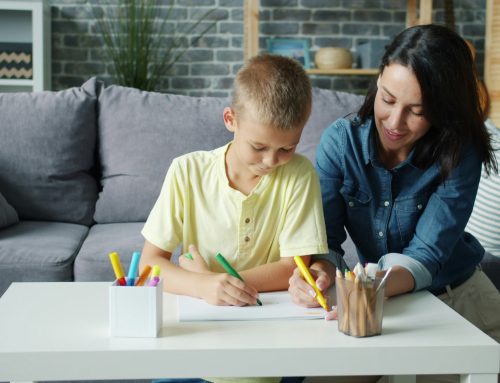Life rarely slows down. Mindfulness offers a humane alternative: warm, non-judgmental attention to what’s here—sensations, thoughts, feelings, surroundings—with choice. As Pema Chödrön teaches, we don’t practice to “feel good” all the time; we practice to stay with ourselves kindly, like open sky holding passing clouds.
What Mindfulness Is (and Isn’t)
Mindfulness is present-moment awareness with kindness. You notice what’s happening inside and around you without stamping it “good” or “bad.” It isn’t about forcing your mind blank or becoming a “calm person,” but about creating space to respond instead of react.
Why It Helps
With small, steady practice, people commonly report:
- Lower stress and emotional reactivity
- Clearer focus and follow-through
- Better sleep
- More choicefulness in relationships and daily life
A well-known eight-week course at Harvard-affiliated Massachusetts General Hospital found that brief daily practice (about half an hour) helped participants feel less stressed, more balanced, and more attentive—and that these benefits build over time with consistency. Translation: you don’t need marathon sessions; short, regular practice changes how you handle life.
Safety, Choice, and Access (for everyone)
Mindfulness should be optional and adjustable:
- Breath is optional. If breath is edgy, use feet on the floor, a warm mug, a sound, or a visual point.
- Eyes open is allowed. Soft gaze often feels safer.
- Keep it short. Start with 30–90 seconds; stop anytime.
- Cultural fit matters. Choose anchors and words that feel like you.
If practice ramps up distress, switch anchors, take a break, try temperature (cool water on wrists), or move. We’ll co-create what’s safe and sustainable for you.
A Smooth Bridge: From Everyday Mindfulness to Clinical Programs
Think of mindfulness on a spectrum:
- On one end is everyday body awareness—tiny “mindfulness snacks” like noticing your feet on the ground or the temperature of your mug. These build basic steadiness and self-friendliness.
- On the other end are structured clinical programs that teach the same skills on purpose, step-by-step, to help with stress, anxiety, low mood, pain, and relationship patterns. If the simple practices help but you want more guidance, accountability, and skills, these programs are the natural next step, not a different path.
You’re not “graduating” from mindfulness into something else—you’re deepening the same practice with a teacher, a curriculum, and weekly support.
Where Mindfulness Shows Up in Therapy
- MBSR — Mindfulness-Based Stress Reduction: 8-week course teaching mindful attention, gentle movement, and stress skills.
- MBCT — Mindfulness-Based Cognitive Therapy: Mindfulness + cognitive tools to notice unhelpful thought loops and relate differently to them (often used for depression and anxiety).
- ACT — Acceptance and Commitment Therapy: Make room for hard thoughts/feelings while acting on your values.
- DBT — Dialectical Behavior Therapy: Skills for mindfulness, emotion regulation, distress tolerance, and relationship effectiveness.
- MBPM — Mindfulness-Based Pain Management: Mindfulness to reduce suffering and improve function with chronic pain.
- MBAT — Mindfulness-Based Art Therapy: Mindful attention + creative process to support regulation, expression, and insight.
We’ll help you pick what fits your goals, culture, and nervous system—stillness or movement, eyes open or closed, writing or art, one minute or more.
Neurodivergence & Trauma: Practical Modifications That Matter
Mindfulness can support Autistic, ADHD/AuDHD, dyslexic, and other neurodivergent folks, as well as those living with trauma/PTSD—when it’s adapted. Here’s how we tailor it so it’s safer and more doable:
Anchors & Focus
- Breath-free options: Use feet pressure, hand on heart, holding a textured object, sound tracking, or visual spots.
- Single-channel attention: Choose one sense at a time (just sound or just touch) if multi-sensory input overwhelms.
- Movement-based noticing: Gentle swaying, pacing, stretching, rocking, stimming—track one sensation (heel strike, fabric on skin).
Pacing & Dose
- Time-boxing: Start with 30–60 seconds; repeat as desired (“mindfulness snacks”).
- Titration & pendulation: Touch a difficult sensation briefly, then return to a neutral resource (chair support, room temperature, feet).
- Frequent opt-outs: Permission to pause, switch anchors, or stop any time.
Environment & Sensory Support
- Eyes open/soft gaze; sit near an exit if that feels safer.
- Adjust inputs: Dim lights, reduce noise, use captions, allow headphones/earplugs or sunglasses.
- Fidgets welcome: Stones, fabric, putty; weighted items or gentle pressure can help with body boundaries.
Grounding & Orientation
- Name the now: Silently state date, place, three neutral objects you see if you feel spacey.
- Temperature reset: Cool water on wrists or a cool pack to settle activation.
- Co-regulation: Pair practice with a trusted person or clinician when helpful.
Language & Framing
- Parts-aware phrasing: “A part of me is restless; another part is curious.”
- Values-anchored: Link practice to what matters (parenting patience, creative focus, pain pacing), not to “being calm.”
Group & Program Adaptations (MBSR/MBCT/ACT/DBT, etc.)
- Shorter practices in group; more micro-reps between sessions.
- Alternative anchors offered every time (not just breath).
- Predictable routines and clear agendas; written and visual instructions.
- Accessibility: Captions, breaks, options to stand/move, seated alternatives to yoga, quiet exits.
- Safety agreements: Normalize opting out, camera-off time (if virtual), and checking in after difficult moments.
These tweaks preserve the heart of mindfulness—what Pema Chödrön calls steadfastness, clear seeing, courage, meeting our edge, and “no big deal”—while respecting nervous-system realities and sensory profiles.
Two Light-Touch Ways to Begin (keep it tiny)
- Object Anchor (45–60 sec): Hold a small item (stone, mug, fabric). Notice weight, temperature, texture. If attention wanders, whisper “coming back,” feel your feet.
- Sound Scan (60 sec): Track far → mid → near sounds. No story, just hearing.
Tie either to a daily cue (first sip of tea, unlocking your phone). Consistency beats intensity.
Potential Pitfalls (and how to stay safe)
Mindfulness isn’t a cure-all. Going too hard, too fast, or without support can increase unease for some people. Gentle pacing, choice of anchors, and learning within a therapeutic relationship usually improve outcomes. It’s also okay if mindfulness isn’t the right tool for every moment—pair it with medical care, skills training, medication, community, or spiritual practices as needed.
Bottom line: Mindfulness isn’t a mood hack; it’s a friendlier relationship with experience. In Pema Chödrön’s spirit, you’re learning to stay with yourself, see clearly, grow courageous, and meet the unknown—then hold it all a little more lightly. If you want a steadier container and proven structure, programs like Mindfulness-Based Stress Reduction (MBSR) or Mindfulness-Based Cognitive Therapy (MBCT) extend the same skills you’ve already begun—the bridge is seamless. When you’re ready, we’ll co-create the version that fits your brain, body, and life.





